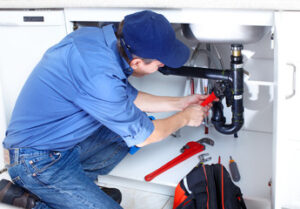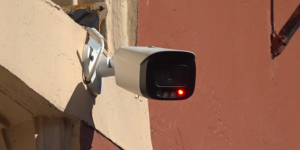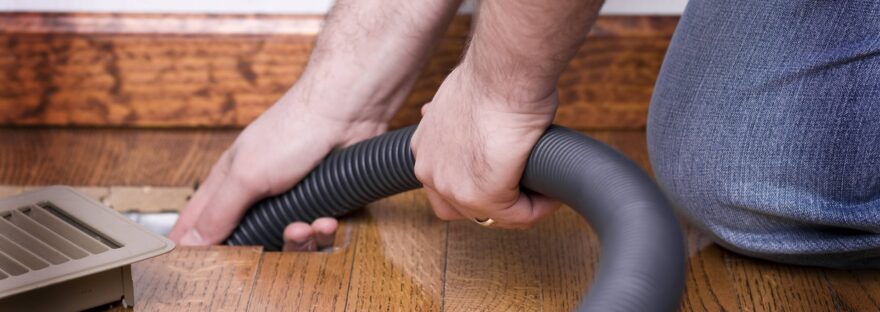If you enjoy on-the-job variety and can visualize detailed structures from drawings, you may be a good fit for a career as a Plumber. These professionals install, repair and maintain pipes that facilitate water distribution and sewage disposal in residential and commercial buildings.

Leaking or broken pipes can cause water damage to your home or business. If you notice a puddle in your basement or another area of your property, it is important to call Granada Hills Plumber right away.
A broken pipe can be a major inconvenience and a serious hazard to your health. Water damage is one of the most common and destructive problems property owners face, and left unchecked it can destroy the structural integrity and value of a home or building. This is why it’s important to keep an eye out for any signs of a leak or burst pipe. Here are a few warning signs to watch out for:
A sudden increase in your water bill is a good indicator that you may have a damaged or leaking pipe. You could also notice wet rings on your ceiling or floors, as well as low water pressure in your showers and sinks. If you suspect you have a broken pipe, it is best to call a plumber right away to avoid any further damage.
Gurgling and hissing noises coming from your pipes are a sure sign that you have a leak somewhere in your plumbing system. These sounds are caused by water escaping from damaged or corroded pipe components, so it is important to have your pipes repaired as soon as possible.
Another telltale sign that you have a leaking or burst pipe is the strong smell of hydrogen sulfide. This odor is produced when iron deposits build up in your pipes and are released into your home’s sewer system. The smell is similar to that of rotten eggs, and this is an indication that you have a sewage backup issue that needs to be addressed immediately.
A professional plumber will be able to locate the source of the leak and make a quick repair. The plumber will begin by cleaning the area around the affected pipe, and then they will use a push-fit coupling or repair clamp to seal the leak. Before installing a new coupling or clamp, the plumber will ensure the pipe is dry and clean by using a wet/dry vacuum and may use a noncontact electrical tester to check for electricity in the area. If you don’t have a professional plumber available, a rubber patch and hose clamps are an inexpensive alternative that can help stop the leak temporarily.
Sewage Backups
Sewage backups are dangerous to your health and pose a serious risk to the structure of your home. They are caused when a clog or blockage prevents wastewater from flowing freely through the sewer lines into the main drain line. This leaves wastewater with nowhere to go, so it backs up into the sinks, tubs, toilets and showers in your home. While sewage backups are always a concern, there are some steps you can take to help prevent them from happening in the first place.
Most sewage backups are caused by clogs in the main drain line or the service lateral lines, which connect your house to the main line. These clogs are typically caused by cooking grease, food scraps, baby wipes, sanitary products, tree roots, leaves and other debris that find their way into the pipes. Clogs can also be caused by broken pipes, pipe corrosion, aging infrastructure and even flooding events.
A sewage backup can be extremely dangerous to your health because it contains harmful bacteria that can make you very sick. It can also cause severe damage to your home, destroying flooring, walls and furniture. If you notice a sewage backup, shut off the water in your home and immediately call a plumber. You should also open windows and doors to ventilate the area. If the sewage is near an electrical outlet, you should turn off the power to that outlet.
Many people mistakenly assume that a sewage backup is simply the result of a single clogged drain or toilet. However, it’s often a sign of a larger problem with the sewer line. A professional plumber can use a drain snake or auger to clear the blockage and restore proper flow.
In addition to causing property damage, sewage backups can create an unpleasant odor in your home and put you at risk of air contamination. To avoid these problems, call a professional plumber for annual maintenance and inspections. They can clean your drains, remove any grease buildup and inspect your pipes for any issues before they become a problem.
Trenchless Sewer Repairs
When your sewer line starts having issues, it’s important to call a plumber right away. The issue could lead to expensive sewage backups that affect more than just your home. Traditionally, a plumber would need to dig huge trenches in order to access and repair the damaged line. However, thanks to modern technology, there are now ways to repair the line without damaging your yard and landscaping. Trenchless sewer repair methods are minimally invasive and won’t cost you thousands of dollars in property damage.
One of the most popular methods is called CIPP, or cured-in-place pipe. In this process, a felt tube that’s impregnated with resin is drawn into the damaged pipe and pushed into position. The tube is then inflated with water or air to take the shape of the pipe. The resin cures to create a new, solid replacement pipe that’s resistant to corrosion. This method is typically used for repairing minor leaks and cracks, but it can be effective in resolving some clogs as well.
Another common trenchless repair method is called pipe bursting. This involves pulling a head that will destroy the old pipe while filling its space with a new, high-density polyethylene pipe. This is an effective way to replace a damaged line without the need for heavy excavation.
If your home has old, outdated pipes that are starting to break down or have holes in them, then you may need to replace them altogether. This can be a complicated job that requires professional help. Trenchless sewer replacement is much faster and more cost-effective than traditional methods, and it will save you thousands of dollars in property damage as a result.
When you’re ready to replace your old, damaged pipes, call a plumber who is trained in trenchless technology. They’ll be able to determine the best solution that will fit your needs, budget, and property. They can even use a camera inspection to assess the condition of your sewer pipes so you’ll know what to expect from your repair. Then they’ll be able to start working on your pipes and get them back up and running in no time.
Root Infestation
Tree roots can be beautiful and provide valuable shade in your yard, but they can also become a problem when they invade your sewer line. Roots are attracted to the moisture and nutrients in sewage, and they can enter through cracks or breaks in your pipes, eventually causing clogs. This issue is most common in older homes in Gilbert and Chandler, and it’s important to be aware of the symptoms of a root intrusion so that you can act quickly.
Some of the most common symptoms of a root invasion include slow drainage, sewage backups, and gurgling sounds in toilets or drains. If you notice any of these signs, contact a plumber right away to schedule an inspection. Your plumber will use a video camera to check for cracks in your sewer line and then determine the best course of action to repair the damage.
One way to prevent root intrusion is to install a root barrier, which is a physical wall that prevents roots from entering your sewer line. Another solution is to be mindful of where you plant trees, choosing locations far from your plumbing lines. Chemical treatments are also available, and they can inhibit the growth of unwanted roots.
While some DIY enthusiasts may try to remove the root infestation themselves, this is a job for an experienced professional. Not only will your plumber be able to identify the source of the problem, but they’ll also be able to take the proper steps to ensure that the problem doesn’t return in the future.



